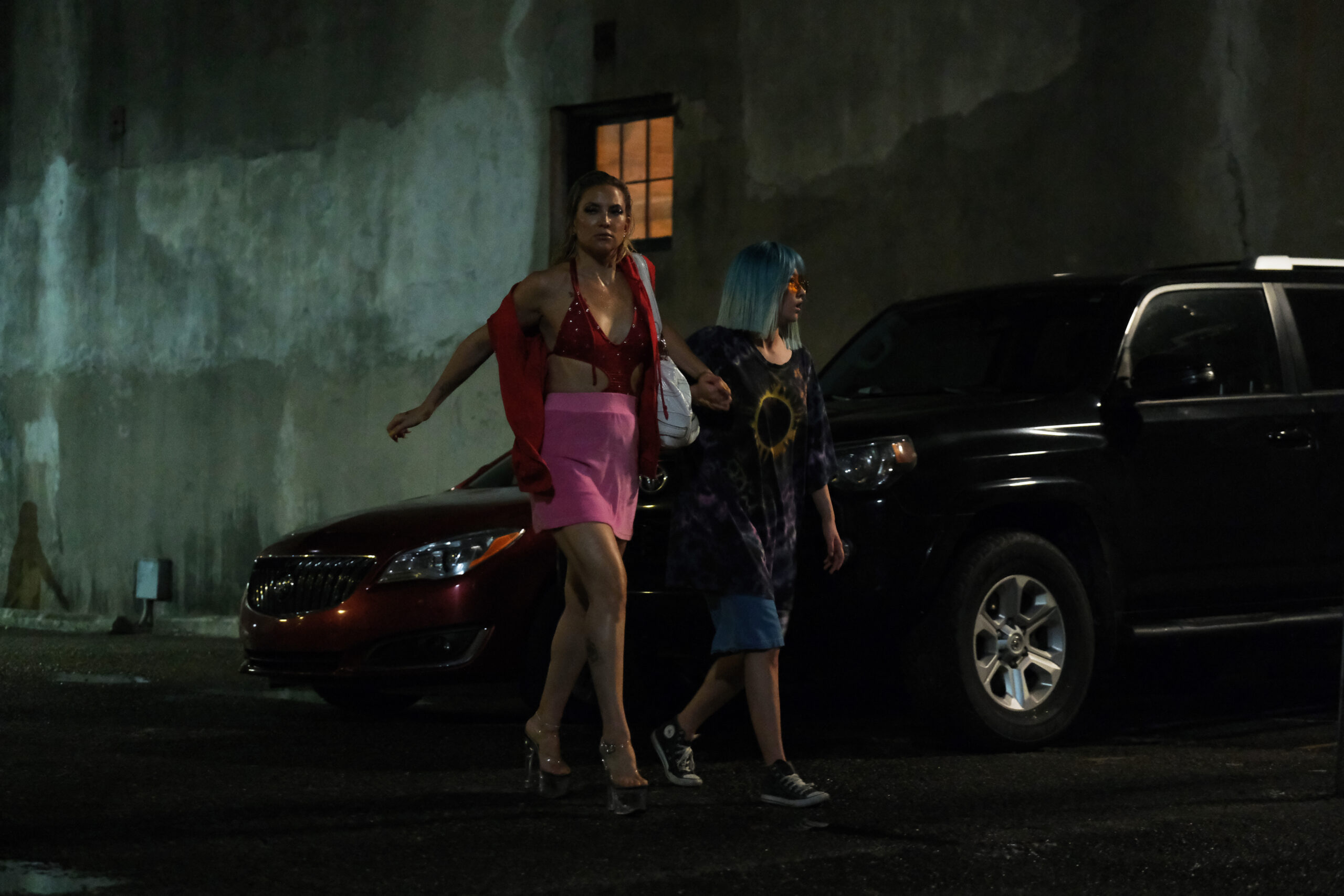“I’m always drawn to the people that don’t neatly fit into the conventional shit that’s all around, the system.” – Ana Lily Armipour.
Ana Lily Armipour has drawn on her own interstitial experience as an outsider to create characters and spaces that question what it is to live life on the margins. Her first feature, A Girl Walks Home Alone at Night chronicled the relationship between a young man beset by poverty, crime, and the effects of parental neglect due to drug addiction with a mysterious chador wearing, skateboarding vampire in the wasteland that was “Bad City.” The Bad Batch was about people who have been rejected from society for crimes (sometimes the crime was being an immigrant) and was an off-kilter comment on the American carceral system. In her most recent work Mona Lisa and the Blood Moon the protagonist is a young Korean woman who has spent the majority of her life in a mental hospital in a non-responsive state.
Mona Lisa Lee (Jeon Jong-seo) is a political refugee from North Korea. Rejected many times from foster care placings she ends up as “property of the state” and incarcerated in an asylum for dangerous adolescents in New Orleans. One evening she awakens from her catatonic state and with the aid of her strange telepathic powers escapes the hospital. Literally adrift in a city she has no idea about she encounters people who could be friends or could be foes. She is a babe in the woods, but the woods are the sweaty neon-lit streets of New Orleans (captured exquisitely by Pawel Porgorzelski, best known for his collaborations with Ari Aster). For Amirpour the setting of her work is a large part of it’s narrative drive. New Orleans is rendered as strange as the fictional “Bad City” of A Girl Walks Home Alone at Night, although unlike the aforementioned fictional city, New Orleans is rendered as beautiful as it is threatening.
Still dressed in the hospital issued strait-jacket, Mona Lisa wanders the dark streets of the city until she finds a convenience store. She meets a group of men outside who at first appear to be vaguely threatening. One of them, Fuzz (Ed Skrein) takes an interest in her and buys her food but insists she eats it in his tricked-up car and gives him a kiss before he hands over the goods. Armipour sets up the encounter with the potential for Mona Lisa to be abused but draws back on the premise. Fuzz isn’t a predator but a hopeless romantic who falls for the mysterious woman.
Meanwhile news of Mona Lisa’s escape has reached the authorities and Officer Harold (Craig Robertson) is accidentally on the case. Responding to another call outside the convenience store he spots Mona Lisa in Fuzz’s car and gives chase. Mona Lisa uses her psychic powers to compel Officer Harold to shoot himself in the leg. Officer Harold’s meeting with Mona Lisa leads him on an obsessive and sometimes hilarious mission to track the young woman down.
Hunger drives Mona Lisa to a diner where she uses her power to break up a fight between two women, one of them being Bonnie (Kate Hudson) a single mother and stripper at the Bourbon Street joint ‘The Panty Drop.’ Bonnie is canny enough to recognise that Mona Lisa represents an opportunity to make some money. She brings her along to her club and (rightly) bilks a group of douchebro college boys out of cash after they tipped her only $2 for a lap dance. Mona Lisa’s innocence is highlighted against Bonnie’s world weariness. Bonnie sees the potential goldmine that is Mona Lisa and invites her home with her. It’s in Bonnie’s home that Mona Lisa makes her first real friend, Bonnie’s neglected eleven-year-old son, Charlie (Evan Whitten), a sensitive kid who has already seen too much of life yet acts as Mona Lisa’s hopeful guide through the world. Their bond is forged partly because Mona Lisa herself was about Charlie’s age when she was put in the asylum. In many ways she’s a child and it makes sense that she and Charlie relate to each other on a level that is impossible for her to achieve with others.
“People are hard to like” Mona Lisa states after another run in with Officer Harold. Yet people are also surprising. Armipour defies audience expectations with acts of true kindness being shown to Mona Lisa. For a film that highlights how badly the system treats the vulnerable and often turns them into hardened survivors, there is a lot of hope in the piece. Kate Hudson’s Bonnie Belle may at first appear to be a heartless grifter, but she is more than that – for all her faults she is a loving mother. Fuzz is an unlikely Prince Charming who helps rescue Mona Lisa. Mona Lisa herself has the opportunity to use her supernatural powers and violently attack anyone who threatens her, yet she generally holds back.
Armipour essentially creates a strange mood piece which incorporates a fantastic soundtrack and original music by Daniele Luppi. The film is a visual trip that can sometimes be a little overbearing but is undeniably intoxicating. Armipour’s lack of interest in crafting a credible narrative for her characters and relying on “vibes” to convey meaning may prove to be a touch wearing on audiences. It’s best to go into Mona Lisa and the Blood Moon with the advice that Officer Harold gets from a fortune cookie at the beginning of the film – “Forget what you know,” because Armipour is telling you a fable and if you pay attention you may indeed find you’ll discover something you weren’t expecting.
Director: Ana Lily Amirpour
Cast: Jeon Jong-seo, Kate Hudson, Craig Robinson
Writer: Ana Lily Amirpour



